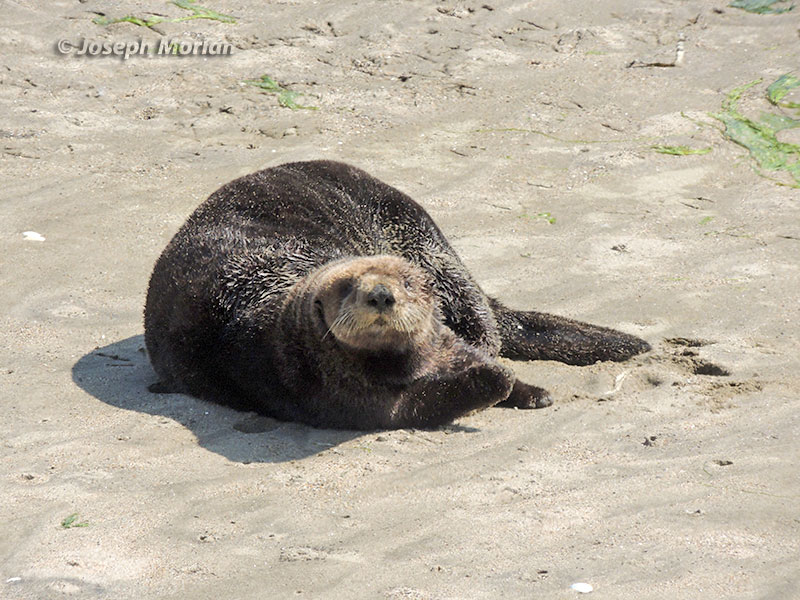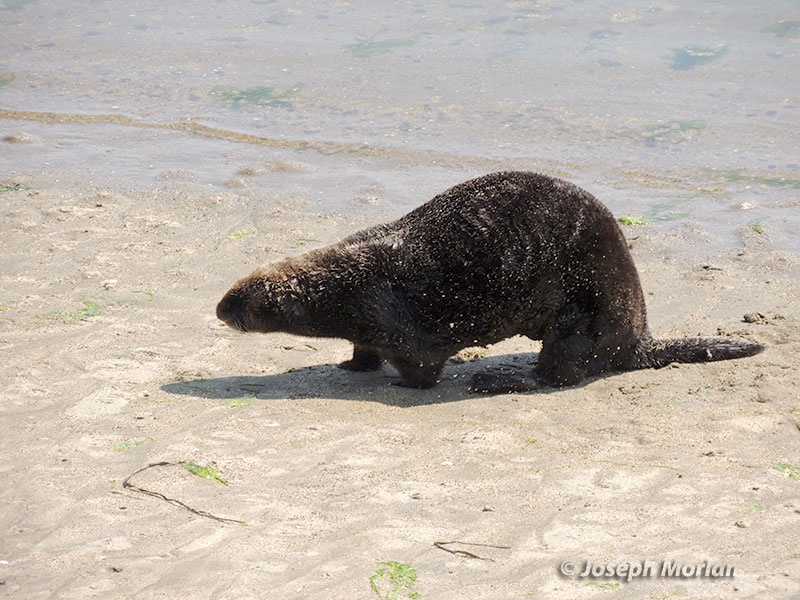


Rarely seen on land, Southern Sea Otters range from Central to Southern California. They differ from the northern race (E. l. kenyoni) in that Southern Sea Otters have a longer rostrum and smaller teeth. Famous for their dense fur, these endangered otters were hunted to near extinction in the 19th Century. The northern population "kenyoni" has suffered declines of up to 90% with some recent decline attributed to Killer Whale predation. However the Cook Inlet/Kodiak population has remained stable or increased in recent years. Nikon CoolPix P510.
References:
Doroff, A. & Burdin, A. 2015. Enhydra lutris. The IUCN Red List of Threatened Species 2015: e.T7750A21939518. http://dx.doi.org/10.2305/IUCN.UK.2015-2.RLTS.T7750A21939518.en. Downloaded on 17 August 2018.
Kristin M Campbell, Sharlene E Santana; Do differences in skull morphology and bite performance explain dietary specialization in sea otters?, Journal of Mammalogy, Volume 98, Issue 5, 3 October 2017, Pages 1408–1416, https://doi.org/10.1093/jmammal/gyx091
Wikipedia contributors. (2018, July 29). Sea otter. In Wikipedia, The Free Encyclopedia. Retrieved 05:46, August 17, 2018, from https://en.wikipedia.org/w/index.php?title=Sea_otter&oldid=852508372
Wilson, D. E., M. A. Bogan, R. L. Brownell, Jr., A. M. Burdin, and M. K. Maminov. (1991) Geographic variation in sea otters, Enhydra lutris. J. Mammal. 72(1):22-36.